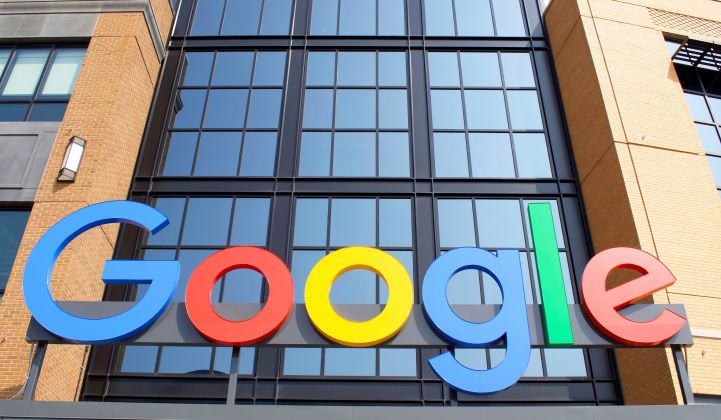Last month, Google quietly joined the Midcontinent Independent System Operator, its second official membership in a regional transmission organization after having joined the Southwest Power Pool last May.
Google was already a significant buyer of renewable energy in both of those markets. But becoming a full-blown member indicates the sway the tech behemoth hopes to wield in future wholesale market decisions.
Neha Palmer, Google’s director of operations and the lead on the company’s energy purchasing, said joining SPP and MISO offers the company an essential “seat at the table” among market stakeholders.
“As a large, focused buyer of renewables, it’s very important for us to be involved in RTO markets,” Palmer told Greentech Media. “As we expand our footprint with our data centers and our operations and expand our footprint with renewables…I do envision us probably getting involved in more RTOs.”
In 2017 and 2018 Google matched 100 percent of its electricity use with commensurate renewables. But the company has longer-term goals of pairing all of its use to renewables at the time the electricity is consumed, which means around the clock. To get there, Palmer said the company needs technologies like energy storage as well as favorable policies — which is where joining up with RTOs comes in. Having a voice in market decisions can allow Google to push policies it favors and lobby against those it opposes.
“I’ll give a very specific example,” said Palmer, citing the interconnection of storage and renewable facilities. “If they’re co-located, in some markets there’s a pretty onerous process to ask for interconnection separately, but often, those are operated as a joint system.”
“We’re looking at things like that,” added Palmer. “The policy should be flexible to allow further development as storage becomes more ubiquitous in those types of hybrid installations.”
Aside from interconnection, other areas of interest that Palmer mentioned include transmission, reliability and congestion.
Though Google is not the sole large corporate member in MISO and SPP, those organizations' membership rolls show that non-power-related entities are somewhat rare. MISO has numerous member categories including state regulatory authorities, wholesale generators, transmission developers and environmental groups. It lists Google among “eligible end-use customer” members, of which there are only 10. The tech company sits alongside heavy electricity users including steelmaker ArcelorMittal and Illinois Industrial Energy Consumers, a consortium of high-electricity-use manufacturing companies.
MISO told Greentech Media it requires an application and a $15,000 fee for non-transmission-owning entities to become members.
The Southwest Power Pool does not divide its members by category, but only a few other large, non-energy-related corporations, such as Walmart and Cargill, are also members.
Walmart signed enough renewable energy agreements in 2018 to rank third among corporations, according to the Renewable Energy Buyers Alliance, a group that tracks corporate deals and helps companies buy clean energy. Like Google, the retail behemoth has a goal of 100 percent renewable energy, though it currently has reached just 28 percent according to its 2019 sustainability report.
Though Google is ahead of most corporations, including Walmart, in terms of renewables milestones, it has still been met with pushback for its support of organizations that deny climate change, and its employees have joined global climate strikes. At a recent event hosted by the American Council on Renewable Energy, the company said its ultimate goal is to decarbonize the grid.
But Google doesn’t believe the voluntary corporate renewables initiatives already swarming markets will be enough. Instead, the corporation called for market reforms and more targeted utility leadership.
Aside from engaging in RTO planning, Google is continuing to work with utility partners to push those outcomes.
Palmer pointed to the company’s work in North Carolina, where Google collaborated with Duke Energy to develop a large-scale purchasing option for large customers called a green source rider. Those tactics could work in other markets where Google is adding to its significant load, such as Virginia.
Virginia utility Dominion Energy has faced significant pushback from corporate consumers over a lack of high-renewable options. So far, Google has steered clear of publicly criticizing Dominion. But as it eyes potential memberships in other RTOs, the company’s influence may increase behind the scenes.
“Similar to other markets that we’ve worked with, we hopefully will work with the utility and the RTO to help figure out...ways we can increase the amount of renewable energy that customers have access to,” said Palmer. “We’ve had some success in the past.”




